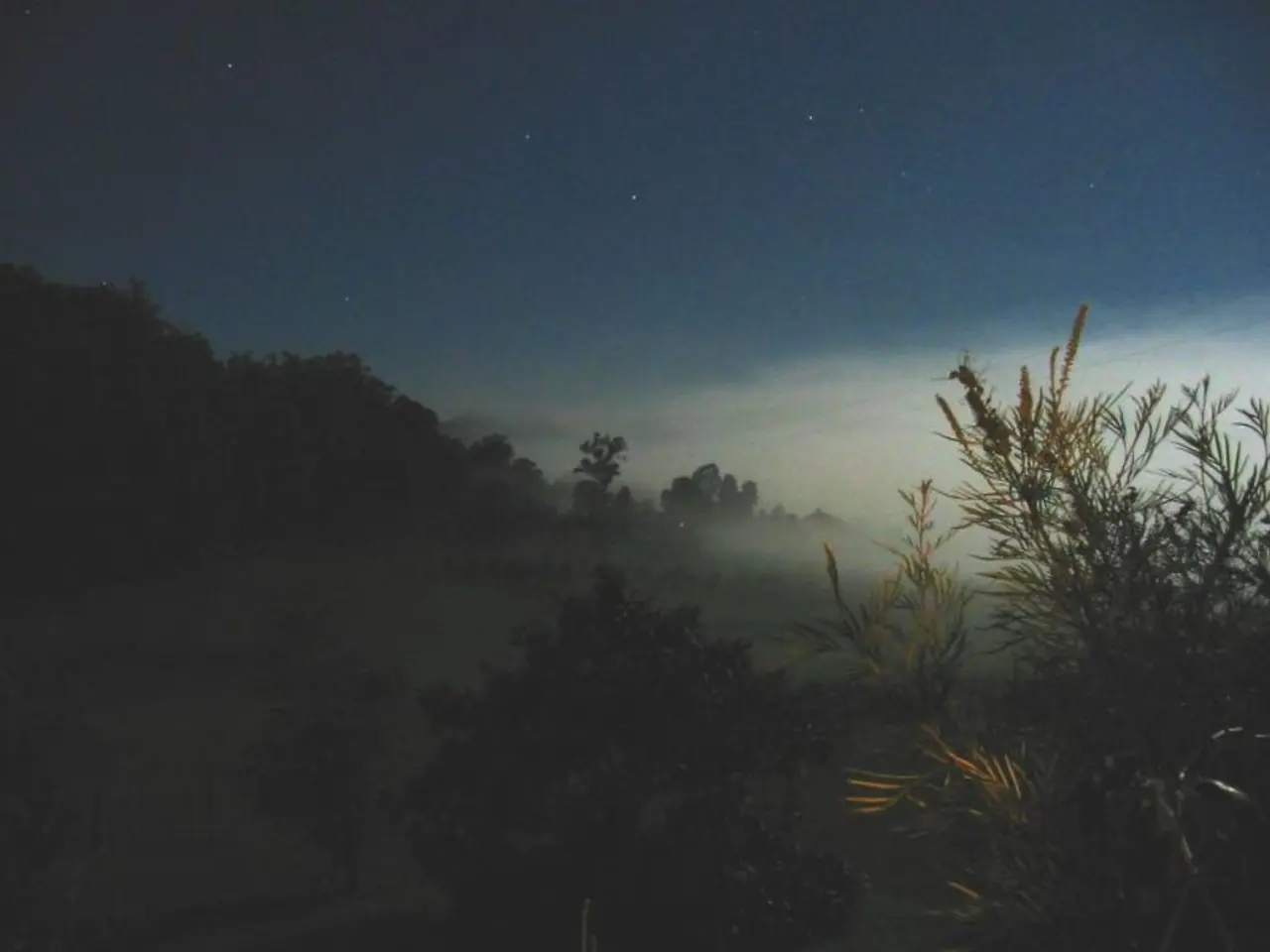Sky Spectacle in September 2025: Dual Eclipses, Aurora, and Saturn's Show
Get ready, stargazers! September 2025 is shaping up to be a month filled with awe-inspiring astronomical events. Here's a roundup of what you can expect to see in the night sky.
Published on 1st September 2025, this article serves as your guide to the celestial spectacles that await you.
On Sunday, Sept. 7, 2025, the Corn Moon will rise in the east, marking the September full moon. Keep an eye out for Saturn on the night of Sept. 21st, as it will appear nearly edge-on with a small telescope.
Early forecasts predict auroras on Sept. 1-2, 2025, adding a touch of magic to the start of the month. For stargazers in the Southern Hemisphere, a partial solar eclipse will occur on Monday, Sept. 22nd, with the moon covering up to 86% of the sun at sunrise for certain regions.
Before sunrise on Friday, Sept. 19th, a thin crescent moon (only 6% lit) will appear close to Venus and the star Regulus in the eastern sky. This alignment, one of the best sky events of the month, is easy to spot without a telescope. In fact, a "diamond" shape will be formed by the four objects (thin crescent moon, Venus, Regulus, and Castor and Pollux in Gemini) in the eastern sky about four degrees apart on Tuesday, Sept. 16th.
The fall equinox occurs on Monday, Sept. 22nd, worldwide, with the sun being directly above the equator at 2:20 p.m. EDT, causing day and night to be about the same length everywhere on Earth.
From before sunrise on Tuesday, Sept. 16th, a thin crescent moon (28% lit) will sit near Jupiter in the eastern sky. The Great Square of Pegasus, a well-known fall constellation, will be visible rising in the east after dark all month.
For those with binoculars, the Andromeda Galaxy (M31) can be seen in the eastern sky all month. Despite being 2.5 million light-years away, it is the farthest object visible without a telescope. From the rightmost "V" of the Cassiopeia constellation in the northwest, trace a line down to the bright star Mirach in Andromeda. About two-thirds of the way toward the horizon lies the Andromeda Galaxy.
Fomalhaut, known as the Autumn Star, is the brightest star in the constellation Piscis Austrinus and is visible in the southern sky all month for mid-northern latitudes.
The astronomical events for September 2025 were compiled and published by Star Walk, as indicated by their astronomy calendar for 2025. From Sept. 22nd, for two weeks, the Northern Lights are stronger due to Earth's tilt, making it a good time to see them, though not guaranteed.
So, grab your telescopes, binoculars, or just your naked eyes, and enjoy the celestial show that September 2025 has in store for us all!
Read also:
- Nightly sweat episodes linked to GERD: Crucial insights explained
- Antitussives: List of Examples, Functions, Adverse Reactions, and Additional Details
- Asthma Diagnosis: Exploring FeNO Tests and Related Treatments
- Unfortunate Financial Disarray for a Family from California After an Expensive Emergency Room Visit with Their Burned Infant






